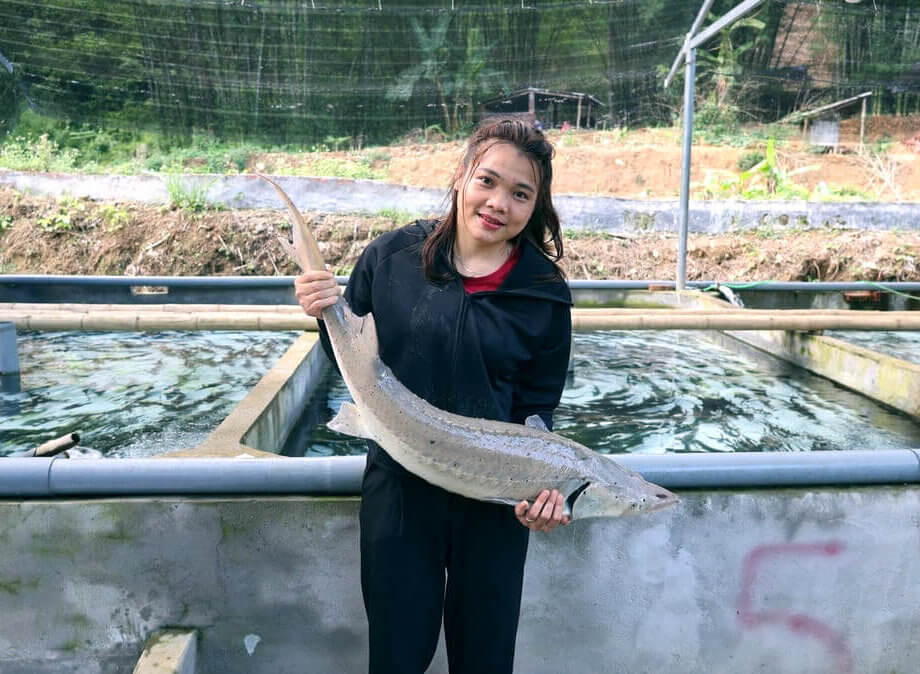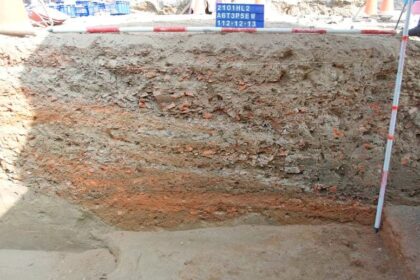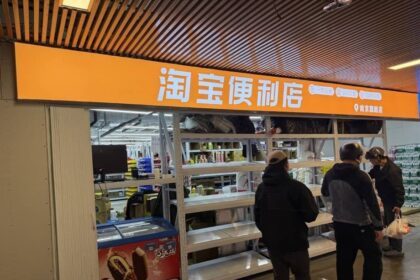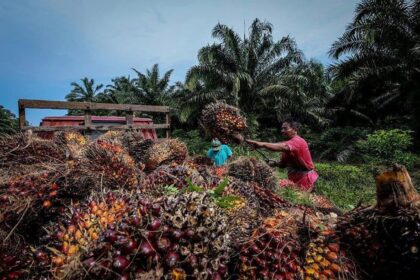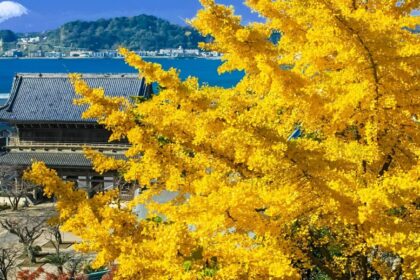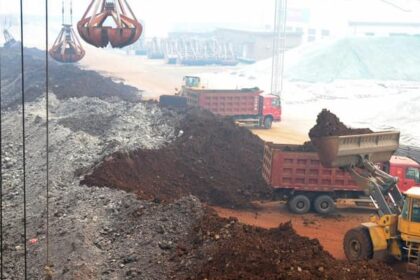The Rise of Sturgeon Farming in Thanh Hoa’s Mountainous Regions
In the remote, mountainous areas of Thanh Hoa province, Vietnam, a quiet revolution is taking place. Once known primarily for its poverty and reliance on traditional agriculture, villages like Ban Xuan Son in Son Dien commune, Quan Son district, are now making headlines for a new and lucrative venture: sturgeon farming. This transformation is not only changing the lives of local families but also setting a model for sustainable economic development in highland communities.
- The Rise of Sturgeon Farming in Thanh Hoa’s Mountainous Regions
- How Did Sturgeon Farming Begin in Thanh Hoa?
- Building a Sturgeon Farm: Challenges and Innovations
- Scaling Up: From Family Venture to Community Model
- Sturgeon Farming Beyond Quan Son: The Story of Ha Khac Sam
- Economic and Social Impact: A Pathway Out of Poverty
- Technical and Environmental Considerations
- Looking Ahead: Opportunities and Challenges
- In Summary
How Did Sturgeon Farming Begin in Thanh Hoa?
The story of sturgeon farming in Thanh Hoa is closely tied to the determination and vision of individuals like Luong Thi Luc and her husband, Pham Ngoc Thanh. Both graduates in physical education from Hanoi, they returned to Luc’s native village in Quan Son after marriage, seeking to build a better life. Their initial attempt at running a bamboo chopstick workshop failed due to unstable markets and low profits, leaving them searching for a new direction.
The turning point came in 2020 during a visit to the Suoi Sua stream, where they noticed the water was cool, clean, and flowed year-round—ideal conditions for cold-water fish like sturgeon. Thanh, drawing on experience from relatives who had successfully farmed sturgeon in Yen Bai, proposed trying this high-value species in their own village. Luc immediately agreed, and together they began researching, investing in infrastructure, and preparing to launch their sturgeon farm.
Building a Sturgeon Farm: Challenges and Innovations
Setting up a sturgeon farm in a remote mountain area is no small feat. The couple invested heavily in building access roads, installing electricity, constructing cement tanks, and setting up a water system that channeled the pristine stream water directly into their fish tanks. Their first batch consisted of over 1,000 juvenile sturgeon, sourced from Sapa, Lao Cai. Despite their careful planning, the initial phase was fraught with difficulties—many fish died due to lack of experience and the challenges of transporting sensitive stock over long distances.
Undeterred, Luc and Thanh sought advice from agricultural extension officers and sturgeon experts, learning to monitor water temperature, oxygen levels, and feeding schedules meticulously. They discovered that sturgeon require water temperatures between 18-23°C, constant oxygenation, and a steady flow of clean water to thrive. Any deviation could result in disease or mass die-offs.
Technical Keys to Success
Sturgeon farming is technically demanding. The tanks must be deep enough (1.2-1.4 meters) and wide (20-35 square meters), with water constantly circulating to mimic the fish’s natural riverine environment. Feeding is also critical—young sturgeon need to be fed every two hours, even at night, and the feed must be of high quality, often imported to ensure optimal growth and flavor.
After a year of trial and error, the couple’s perseverance paid off. Their first harvest yielded over two tons of market-ready sturgeon, fetching prices between 180,000 and 220,000 VND per kilogram. After expenses, they made a profit of nearly 100 million VND—a significant sum in a region where most families subsist on slash-and-burn agriculture.
Scaling Up: From Family Venture to Community Model
Buoyed by their initial success, Luc and Thanh expanded their operation. By 2024, they were raising 20,000 sturgeon annually, with revenues approaching 2 billion VND and profits exceeding 600 million VND. Their farm now provides regular employment for five local workers, each earning 6-8 million VND per month—well above the regional average.
Recognizing the broader potential, the couple established the Thanh Luc Aquaculture Cooperative in 2023. This move not only streamlined production and marketing but also allowed them to support other local families interested in sturgeon farming. They now supply fingerlings, feed, and technical guidance to four other households in Quan Son, helping to spread the benefits of this new industry.
Market Expansion and Product Recognition
Sturgeon from Thanh Hoa is now sold to restaurants and tourist destinations in major cities like Hanoi, Hai Phong, and Quang Ninh. The product’s quality has earned it a three-star OCOP (One Commune One Product) certification, a government recognition of excellence in local specialty products. This has further boosted demand and opened doors to new markets.
Sturgeon Farming Beyond Quan Son: The Story of Ha Khac Sam
While Luc and Thanh’s story is remarkable, they are not alone. In Lang Chanh district, Ha Khac Sam—dubbed the “Sturgeon King” of Thanh Hoa—has built the province’s largest sturgeon and salmon farm at the foot of Pu Rinh mountain. Starting in 2010 with support from local authorities and a personal investment of over 400 million VND, Sam faced numerous setbacks, including devastating floods that wiped out entire crops. Yet, through resilience and innovation, he now produces 8-9 tons of sturgeon and salmon annually, with revenues nearing 3 billion VND and profits of 500-600 million VND per year.
Sam’s farm has become a model for the region, providing stable jobs for several local workers and attracting visitors interested in both aquaculture and eco-tourism. His success demonstrates that, with the right conditions and support, sturgeon farming can thrive even in the most challenging environments.
Economic and Social Impact: A Pathway Out of Poverty
The economic impact of sturgeon farming in Thanh Hoa is profound. For families like Luc and Thanh’s, it has meant a transition from subsistence farming to entrepreneurship, with incomes that rival those in urban areas. The industry also creates ripple effects—providing jobs, stimulating local businesses, and encouraging young people to stay in their communities rather than migrate to cities for work.
Local officials are enthusiastic about the potential. Luong Van Chien, Vice Chairman of Son Dien commune, notes that the sturgeon model is the first of its kind in Quan Son and could be replicated in three to four other locations with suitable water resources. Similarly, Trinh Duc Hung, Chairman of Tri Nang commune, highlights the role of sturgeon farming in promoting both economic development and community-based tourism.
Empowering Women and Ethnic Minorities
Sturgeon farming has also empowered women and ethnic minorities. Luc, a Muong woman, has been recognized as an exemplary female entrepreneur by the Thanh Hoa Women’s Union. Her leadership and willingness to share knowledge have inspired others in her community to pursue innovative economic activities.
Technical and Environmental Considerations
Sturgeon farming is not without its challenges. The species is sensitive to environmental changes, requiring constant monitoring of water quality and temperature. Feed costs are high, and the initial investment in infrastructure can be prohibitive for many families. Moreover, the risk of disease and the need for specialized knowledge mean that technical support and training are essential for success.
Environmental sustainability is another concern. Sturgeon farms must ensure that water use does not deplete local streams or harm downstream ecosystems. Proper waste management and responsible sourcing of feed are critical to maintaining the long-term viability of the industry.
Looking Ahead: Opportunities and Challenges
The future of sturgeon farming in Thanh Hoa looks promising. With growing demand for high-quality, locally produced sturgeon in Vietnam’s urban centers, and the potential for export, the industry could become a major driver of rural development. Local governments are exploring ways to support expansion, including technical training, access to credit, and market development initiatives.
However, scaling up will require careful planning. Ensuring that new entrants have the necessary skills and resources, maintaining product quality, and protecting the environment will be key to sustaining growth. There is also interest in integrating sturgeon farming with eco-tourism, offering visitors the chance to experience both the natural beauty of the mountains and the unique flavors of locally raised sturgeon.
In Summary
- Sturgeon farming has transformed the economic landscape of mountainous Thanh Hoa, offering a sustainable path out of poverty for local families.
- Key pioneers like Luong Thi Luc, Pham Ngoc Thanh, and Ha Khac Sam have demonstrated that, with determination and technical know-how, sturgeon can be successfully farmed in remote areas.
- The industry provides significant income, creates jobs, and empowers women and ethnic minorities.
- Technical challenges include high initial investment, the need for constant environmental monitoring, and specialized feeding and care.
- Local authorities are supporting the expansion of sturgeon farming, recognizing its potential for economic development and tourism.
- Environmental sustainability and responsible management are essential for the long-term success of the industry.
- With continued innovation and support, sturgeon farming could become a flagship industry for Thanh Hoa’s highland communities.


